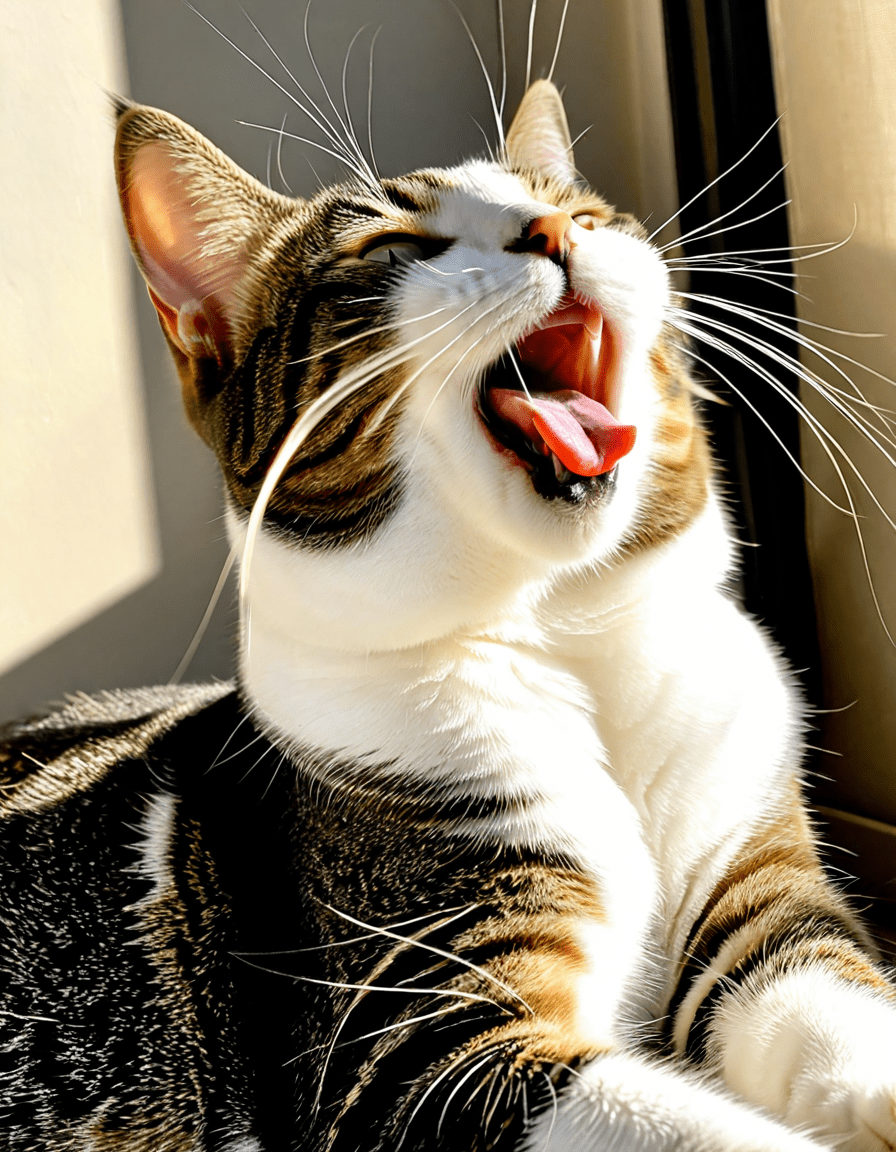In the animal kingdom, long tongues aren’t just for show; they serve vital functions essential for survival and interaction. From specialized feeding techniques to grooming habits, animals with long tongues have adapted in extraordinary ways to thrive in their environments. Let’s dive into the wide-ranging implications and roles that long tongues play across different species.
1. Long Tongues and Their Remarkable Functions
Long tongues serve many purposes, each tailored to an animal’s lifestyle. For some creatures, these long appendages act like tools for reaching food that’s otherwise out of reach. Take for example the giraffe, with its long, prehensile tongue that can extend up to 20 inches. They use it to expertly grab leaves from thorny acacia trees while also helping them perform a rather peculiar grooming habit: licking their own feet.
Other animals, like chameleons, have developed tongues that can extend to nearly twice their body length. This remarkable adaptation allows them to maximize their hunting efficiency. Their tongues can flick out at astonishing speeds when snagging insects, demonstrating a specialized design catered to their predatory lifestyle.
Even among smaller animals, long tongues can make a big difference. Frogs, particularly certain species like the horned frog, have developed long tongues that can shoot out dramatically to catch insects. This feature highlights how survival strategies often hinge on the simple yet effective adaptation of tongue length.

2. Top 7 Animals with Long Tongues That Will Amazingly Surprise You
3. The Science Behind Long Tongues: Evolutionary Insights
Long tongues have emerged in many species as a response to environmental pressures and dietary needs. Studies have shown that variations in tongue length often correspond with specific feeding strategies and habitat adaptations. For instance, animals like the anteater have developed tongues that are not only long but sticky, enhancing their efficiency at catching insects.
Research indicates that species with longer tongues often occupy ecological niches that require them to access food sources others can’t reach, thus allowing for less competition. This evolutionary trend supports the idea that tongue adaptation signifies more than just form—it reveals the connections between an animal’s anatomy and its lifestyle.

4. Can Color Influence Tongue Length? Exploring the Canary Color Phenomenon
Interestingly, the color of an animal’s tongue can sometimes be linked to its function or habits. For example, canaries are known for their vibrant canary color, which can even extend to their tongues. While this coloration primarily serves as a display for attracting mates, it may also indicate vibrant health. Healthy canaries often exhibit more pronounced colors, indirectly influencing their feeding behaviors.
This connection raises questions about how visual cues play a role in animal interactions. In the wild, animals often rely on colors to communicate health and vitality, impacting their social dynamics and mating practices.
5. Pretty Care: Caring for Animals with Long Tongues
Animals with long tongues need special attention to ensure their health and comfort. Regular vet check-ups are crucial to prevent dental and oral issues. For instance, species like anteaters and giraffes rely heavily on tongue functionality when feeding, so any mouth-related problems can cause severe consequences.
Feeding these animals a balanced diet that meets their unique nutritional demands is essential. For example, tapirs benefit from a varied diet rich in fruits and greens, while frogs thrive on a diet of live insects to accommodate their natural foraging tendencies.
Keep an eye on grooming habits for animals like okapis and giraffes, as they use their tongues for maintaining their coats. Regular brushing and cleaning, coupled with a habitat that allows for natural behavior, will enhance their overall well-being.
Wrap-Up: The Hidden Wonders Behind Long Tongues
Long tongues exemplify the fascinating nuances of animal adaptations, proving essential not just for feeding and grooming but as vital tools shaped by evolution. By understanding the diverse roles and adaptations of these appendages, we gain a better appreciation for the intricate relationships between species and their habitats.
These long tongues not only perform vital functions but add layers of complexity to how we perceive animal behavior. As we learn more, let’s continue to celebrate these amazing adaptations, reminding ourselves that nature often has an enchanting way of surprising us.
For further reading on pet behavior and care, check out our articles on why dogs might lick the air or why they love to roll in the grass. With such intriguing adaptations in the animal kingdom, the quest for knowledge never ceases!
Long Tongues: A Wild Side of Nature
It might surprise you just how fascinating long tongues can be across different species! For instance, did you know that a giraffe’s tongue can measure up to 20 inches? That’s about the length of an average ruler! These incredible tongues not only help them reach high leaves but also protect their mouths from thorns. Speaking of peculiar adaptations, the frown tree, known for its unusual appearance, has also inspired many comparisons to the unique features of animals—talk about nature’s artistry!
The Remarkable Functionality of Long Tongues
Long tongues serve many purposes, often tailored to specific lifestyles. Take the pangolin: its tongue can extend out to nearly 16 inches, allowing it to snag ants and termites deep within their mounds. Flamingos, on the other hand, use their long tongues to filter-feed; they sweep their tongues through the water to catch tiny food particles. Imagine that! Fun trivia: if you ever wondered why your dog licks the air, it might just be channeling its inner pangolin, trying to clean off tasty scents!
Long Tongues in Your Own Backyard
Dogs, cats, and even rabbits have their own tongue tales worth telling! A dog’s tongue can be quite the tool for cooling down or giving a good slobbering kiss. If you’ve seen your pooch rolling in the grass, it’s not just for fun; they may also use their long tongues to clean their coats—which raises a few interesting questions, like can piles smell? when they roll around too much! And let’s be honest, there’s something adorable about a squinting cat trying to clean itself, often struggling to reach those tricky spots.
So, there you have it! Long tongues aren’t just oddities; they’re essential for survival in countless species. Whether it’s a giraffe snagging a snack or your dog trying to cool off, these incredible adaptations are a vital aspect of animal life. And if you need a cozy outfit while enjoying nature, why not check out some roller rabbit Pajamas? They might just inspire you to venture out and explore, tongue and all!






